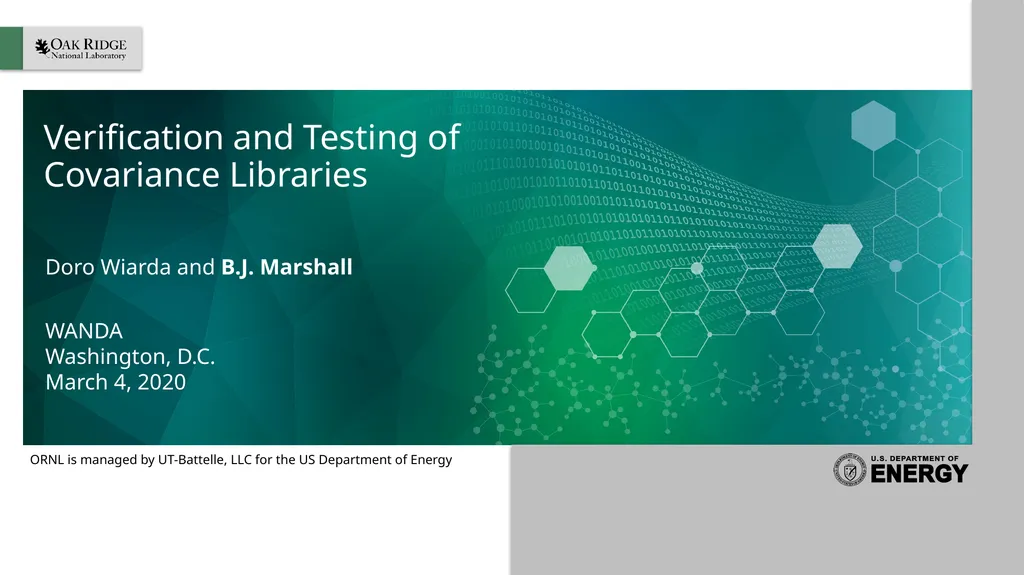
Author : stefany-barnette | Published Date : 2025-08-13
Description: Verification and Testing of Covariance Libraries Doro Wiarda and B.J. Marshall WANDA Washington, D.C. March 4, 2020 Purpose Present current verification and testing of covariance libraries Within this context: Verification refers toDownload Presentation The PPT/PDF document "" is the property of its rightful owner. Permission is granted to download and print the materials on this website for personal, non-commercial use only, and to display it on your personal computer provided you do not modify the materials and that you retain all copyright notices contained in the materials. By downloading content from our website, you accept the terms of this agreement.
Here is the link to download the presentation.
"Verification and Testing of Covariance Libraries"The content belongs to its owner. You may download and print it for personal use, without modification, and keep all copyright notices. By downloading, you agree to these terms.












